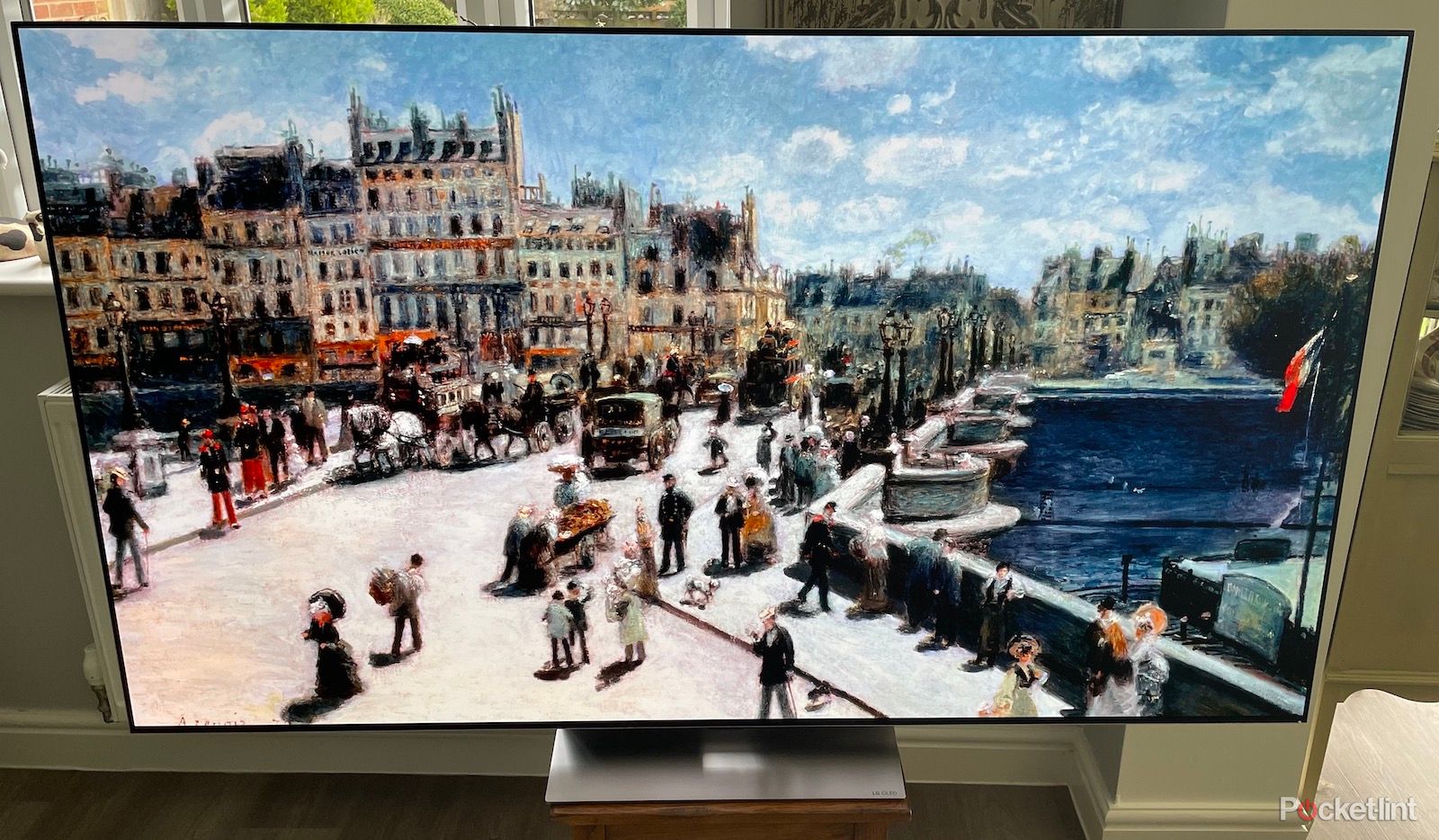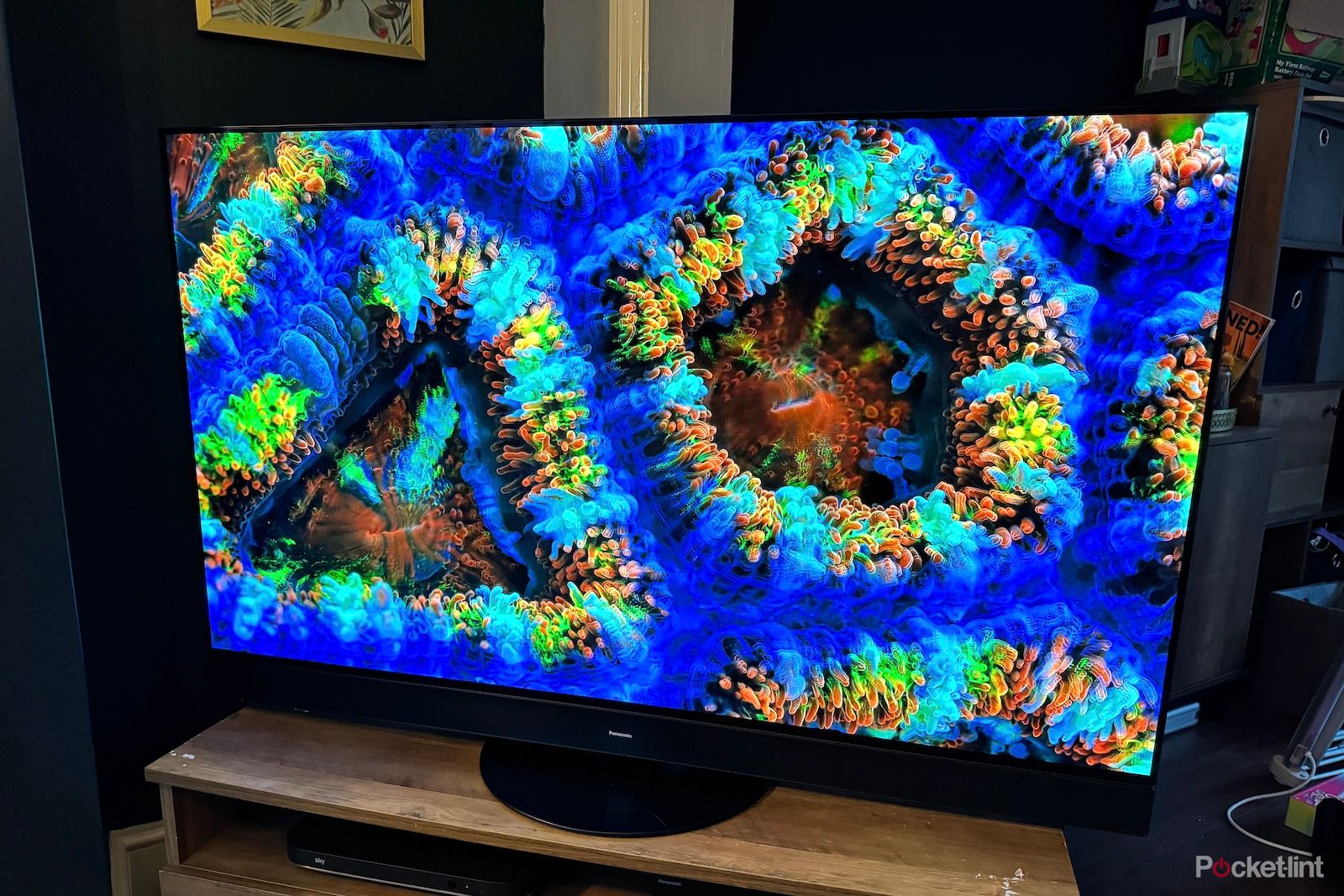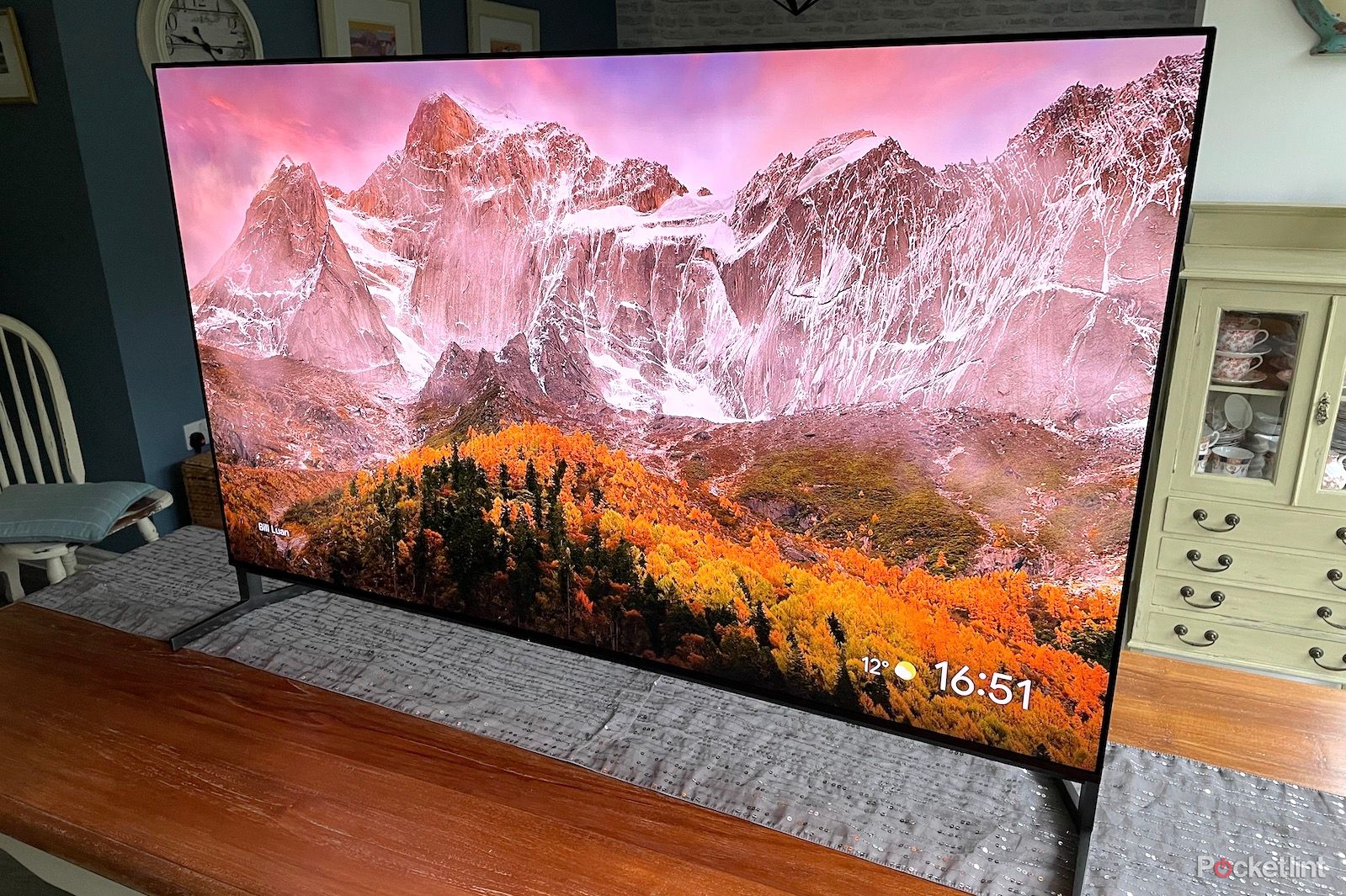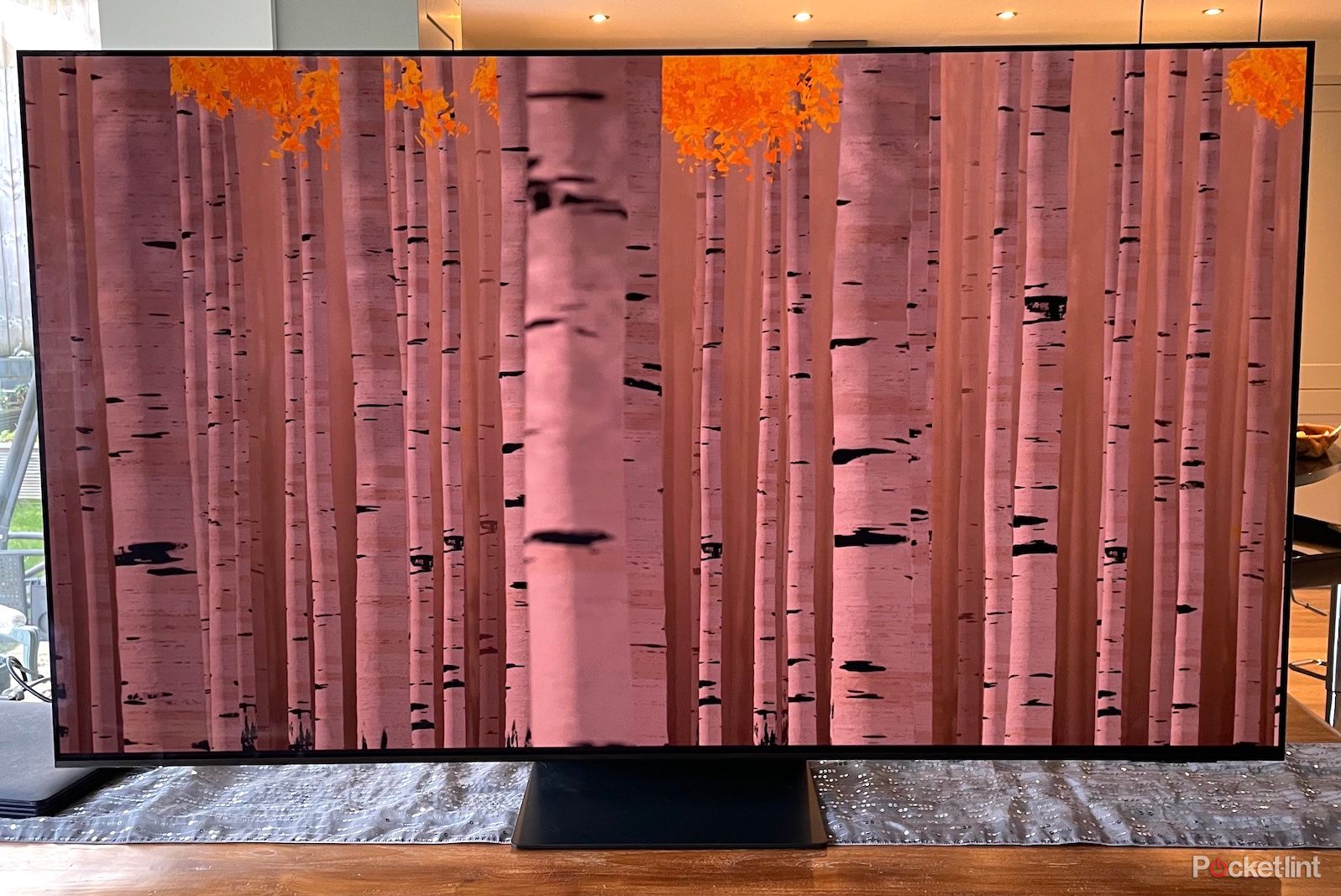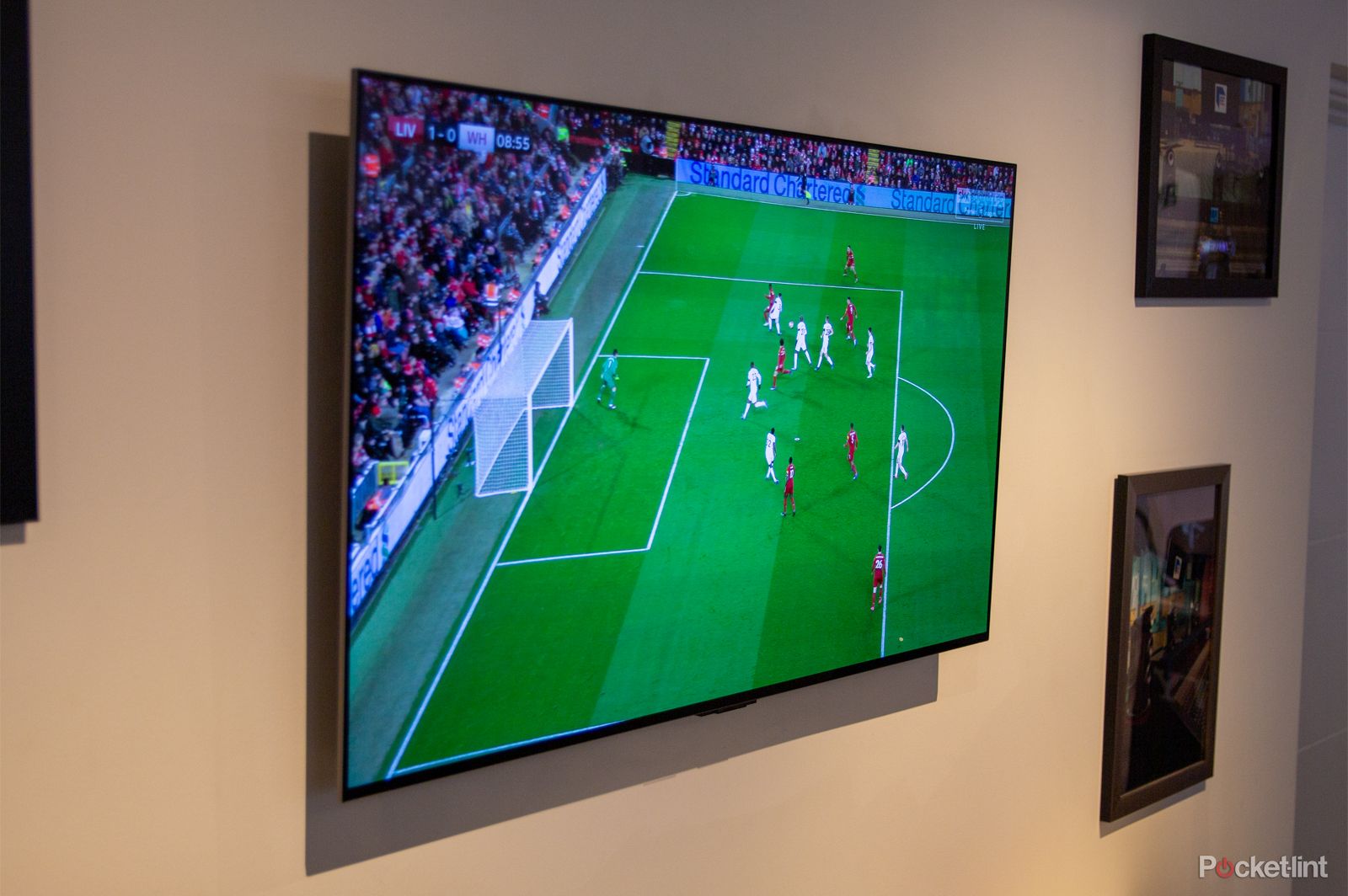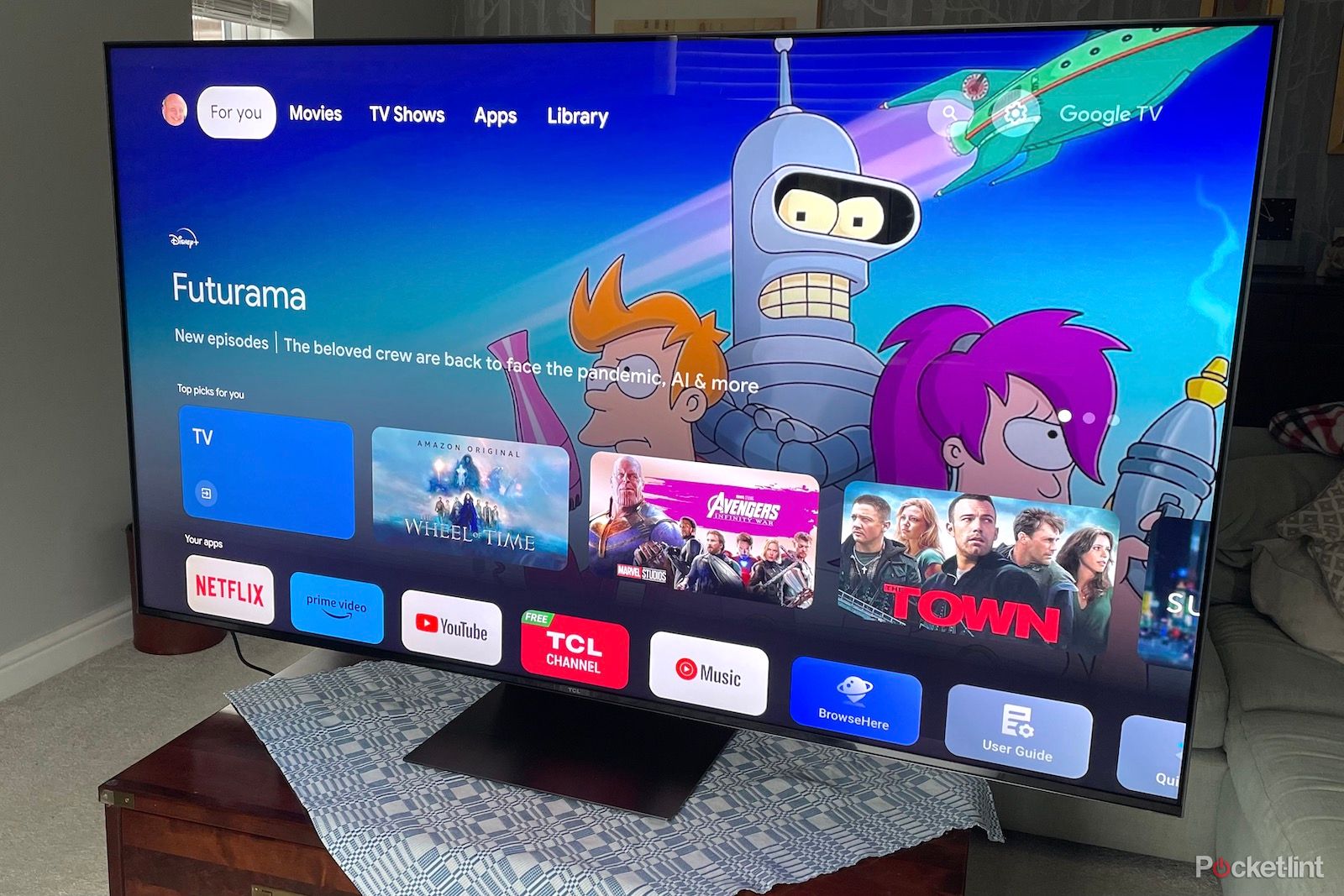Buying a TV is one of the biggest tech purchases you will make, and one you’d hope is going to last you a fair few years – so choosing the best TV for your needs is no quick or easy decision.
If you’re struggling to know where to start, you’ve come to the right place. This buying guide has our pick of the very best 4K TVs on the market right now – from the best OLEDs to QLEDs, big budgets to more humble ones. We’ve searched high and low and tested them too, to bring you a veritable selection of great televisions that will bring your home cinema to life.
Best 4K TVs: Our top choices
LG G3 OLED evo
1. Best 4K TV overall
Looks incredible
$2297 $2797 Save $500
The LG G3 is the flagship 4K OLED from the brand in 2023, and is one of the best OLEDs we’ve ever seen. Expect a bright and punchy picture served up in a super-slim wall-mountable design.
- Dimensions
- 1441 x 878 x 245mm
- Display Technology
- OLED
- Refresh Rate
- 100/120 Hz
- Resolution
- 4K
- HDR?
- Dolby Vision IQ, HDR10, HLG
- Ports
- 4x HDMI, 3x USB, 1x optical
- Weight
- 28.1kg
- FreeSync
- Yes
- G-SYNC
- Yes
- VRR (Variable Refresh Rate)
- Yes
- ALLM (Auto Low Latency Mode)
- Yes
- Screen sizes (inches)
- 55, 65, 77, 83
- The brightest OLED pictures ever
- Sensational contrast and black levels
- Fantastic gaming support
- Disappointing sound quality
- Very slight desaturation in dark scenes
- Desktop stand costs extra
The LG G3 is the best TV we’ve seen in 2023, for all markets. It’s true, our judges gave the Panasonic MZ2000 below our TV of the Year nod in the Pocket-lint Awards 2023, but if you’re not in the UK or Europe – this is the best TV you can buy. It’s not cheap, admittedly, but for those who are looking for the best of the best, this is it.
It’s an OLED TV, which most people know by now offers some fantastic benefits – a super-slim design, superb contrast and excellent viewing angles to name a few. However, the chief complaint of OLEDs is also addressed here, with the use of Micro Lens Array technology. This delivers the kind of brightness we thought impossible from an OLED panel, so even rooms with high ambient lighting can enjoy the benefits OLED can bring.
Of course, the picture performance is top-notch with incredible colour reproduction, the new webOS platform is well-equipped, and its gaming prowess is something to behold, too – thanks for four HDMI port supporting 4K/120Hz. Just be aware its Zero Gap design does mean it’s meant to be wall mounted – and that’s what comes in the box. If you want to stand it up you’ll have to buy the pedestal separately.
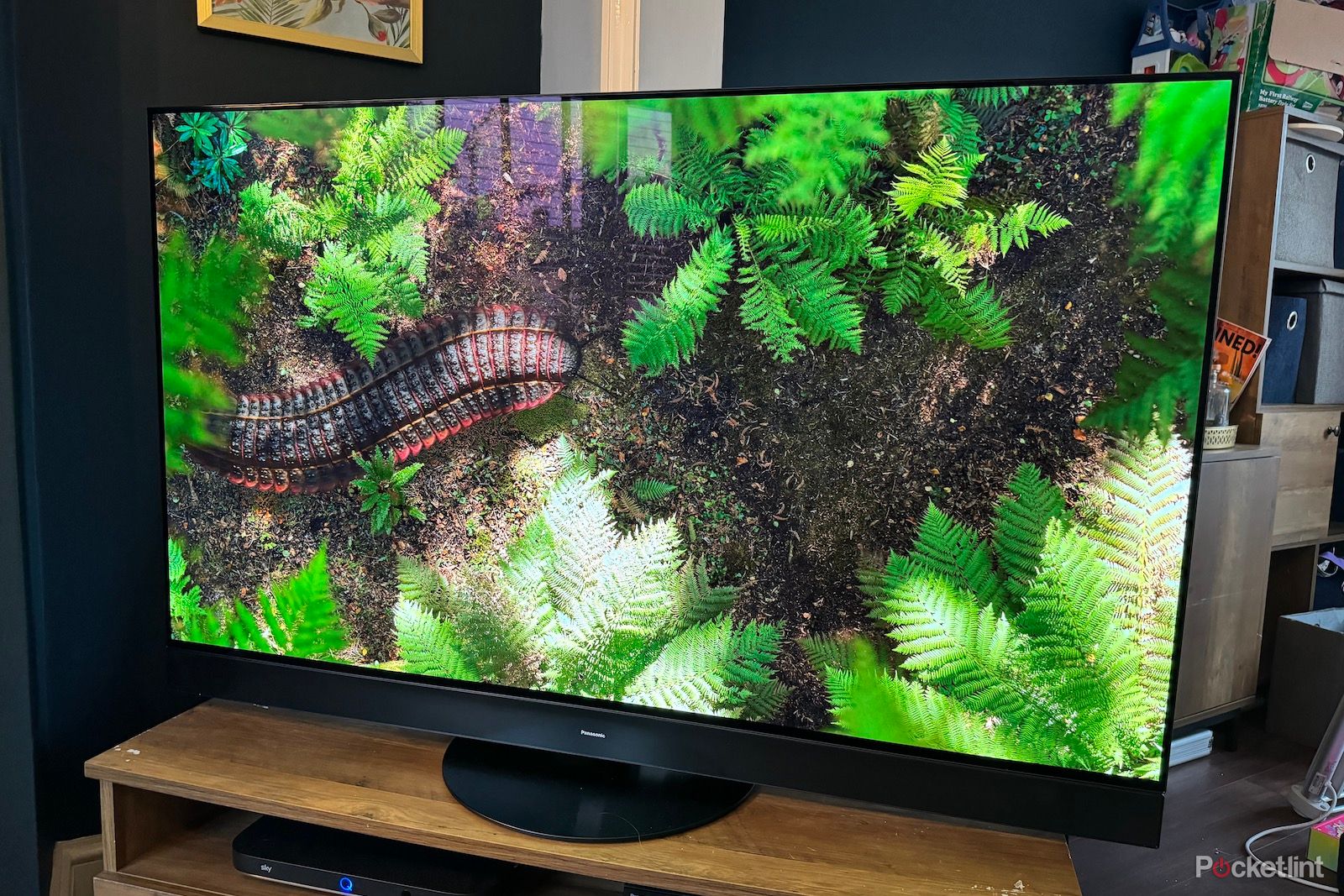
Panasonic MZ2000
2. Best 4K TV for all round performance
A total home cinema package
This flagship OLED is a real beauty, serving up a finely detailed, cinematic picture performance while also sounding great too. It’s pricey, but superb – although sadly, US buyers will miss out.
- Dimensions
- 1,227 x 786 x 350 mm
- Display Technology
- OLED
- Refresh Rate
- 120Hz
- Resolution
- 4K
- HDR?
- Yes – HDR10, HDR10+ Adaptive, Dolby Vision IQ, HLG
- Ports
- 4 x HDMI (2 x 4K/120Hz), 3 x USB, 1 x digital optical out, 1 x 3.5mm AV
- Weight
- 25.5kg
- FreeSync
- Yes, Freesync Premium Pro
- G-SYNC
- Yes
- VRR (Variable Refresh Rate)
- Yes
- ALLM (Auto Low Latency Mode)
- Yes
- Screen sizes (inches)
- 55, 65 and 77 inches (77in does not use MLA panel)
- Beautiful, cinematic picture performance
- One of the brightest OLEDs you can buy
- Great built-in sound
- Full complement of HDR support
- Only two 4K/120Hz HDMI
- Not great for wall mounting
Before we get into it, let me break the bad news now. For our US readers, this TV is not available in the States, which for movie buffs is a real shame.
However, for those readers in the UK and Europe, the Panasonic MZ2000 is a beautifully bright OLED TV that serves up all the traditional benefits of OLED, but with a brighter overall picture and more impactful HDR – all thanks to Micro Lens Array technology.
The pictures that the Panasonic MZ2000 is capable of are nothing less than superb, producing a finely detailed, cinematic picture that looks great with everything you throw at it. The picture processing here is just effortlessly good.
Add in an almost surprisingly good built-in sound system, and the MZ2000 delivers an outstanding performance that raises the bar, once again, of what a great TV looks like in 2023. It’s a total home cinema package.
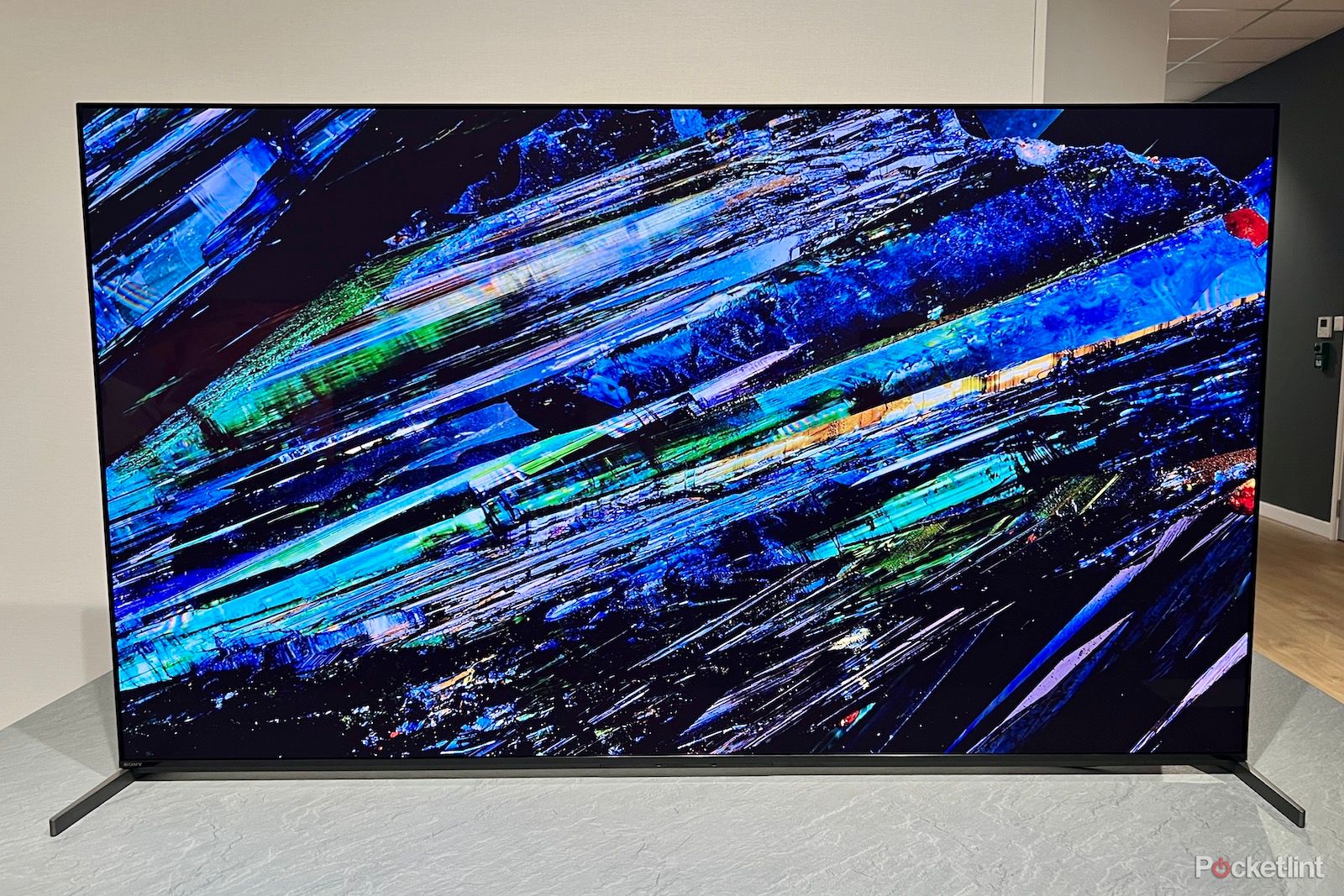
Sony A95L
3. Best 4K TV for movie buffs
A truly cinematic performance
Powerful sound, a super-elegant design and arguably some of the most immersive pictures the TV world has ever seen add up to a superheroic return for Sony’s take on QD-OLED technology.
- Dimensions
- 144 x 86 x 34cm (65in)
- Display Technology
- QD-OLED
- Refresh Rate
- 100/120Hz
- Resolution
- 4K
- HDR?
- Dolby Vision IQ, HDR10, HLG
- Ports
- 4x HDMI, 3x USB, 1x digital optical
- Weight
- 25kg
- VRR (Variable Refresh Rate)
- Yes
- ALLM (Auto Low Latency Mode)
- Yes
- Screen sizes (inches)
- 55, 65, 77
- Stunning colours
- Phenomenal contrast
- Potent, impactful sound
- Only two fully featured HDMIs
- Expensive compared with Samsung QD OLEDs
- Audio lag with Atmos sources
If you’re looking for the finest picture quality that money can buy, you’ll definitely want to take a look at Sony’s A95L.
Like the S95C, it uses QD-OLED panel technology to combine the inky blacks of OLED with the bright highlights of an LCD, but combines that with best-in-class image processing to make it among the most immersive pictures we’ve seen – ever.
Motion handling is another strength here, plus it packs an impressive sound system too. It’s not cheap, but the picture performance is incredible. Those that value a subtle and natural picture will be very impressed indeed.
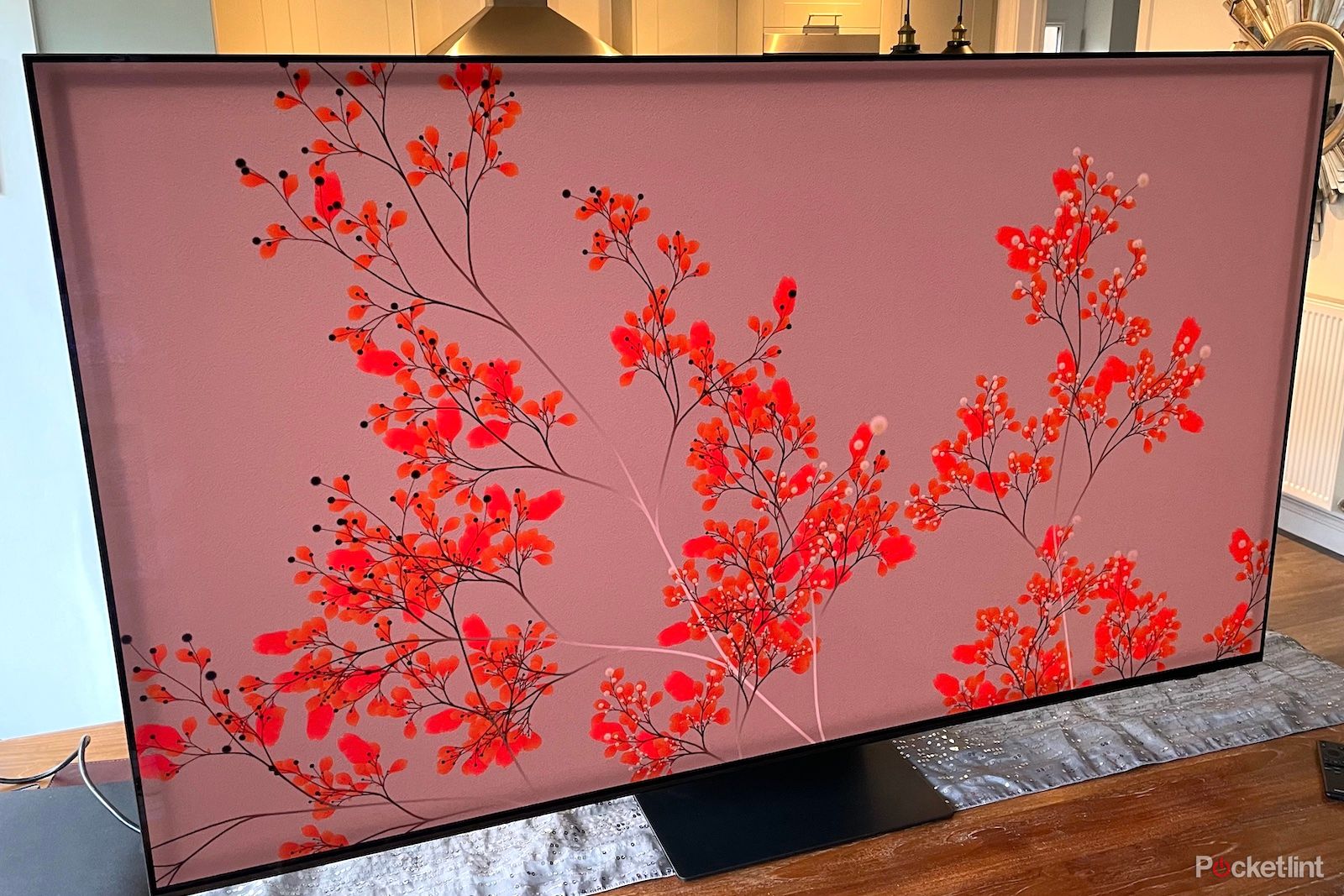
Samsung S95C
4. Best 4K TV for gaming
Great for gamers
$2398 $3298 Save $900
The sequel to Samsung’s debut QD-OLED TV is all we could have hoped for and more. Anyone who thought QD-OLED was a flash in the TV tech pan needs to think again, and fast.
- Dimensions
- 1225 x 771 x 268mm
- Display Technology
- QD-OLED
- Refresh Rate
- 120Hz (up to 144Hz)
- Resolution
- 4K
- HDR?
- HDR10+, HDR10, HLG
- Ports
- 4x HDMI (4K/144Hz), 3x USB, 1x digital optical, 1x ethernet
- Weight
- 24kg
- FreeSync
- Yes (Premium Pro)
- G-SYNC
- Yes
- VRR (Variable Refresh Rate)
- Yes
- ALLM (Auto Low Latency Mode)
- Yes
- Screen sizes (inches)
- 55, 65, 77
- Spectacularly bright OLED pictures
- Stunningly pure primary colours
- Beautiful local contrast
- Lacks Dolby Vision
- Messy out-of-the-box motion processing
The Samsung QE65S95C is another incredible 2023 TV, and pushes QD-OLED tech on further than we might have expected possible in just a year.
In many ways, Samsung’s approach to OLED keeps pace with its MLA-powered LG G3 rival almost every step of the way – even, arguably, stealing LG’s crown as the most exciting gaming display in town. There’s a little more punch here that makes games look glorious, but movies fare well too.
In a perfect world Samsung would finally have moved past its Dolby Vision blind spot and would provide a better out of the box motion experience – but when that’s all we have to grumble about from a technology only entering its second year – we’d say that’s a very accomplished TV indeed.
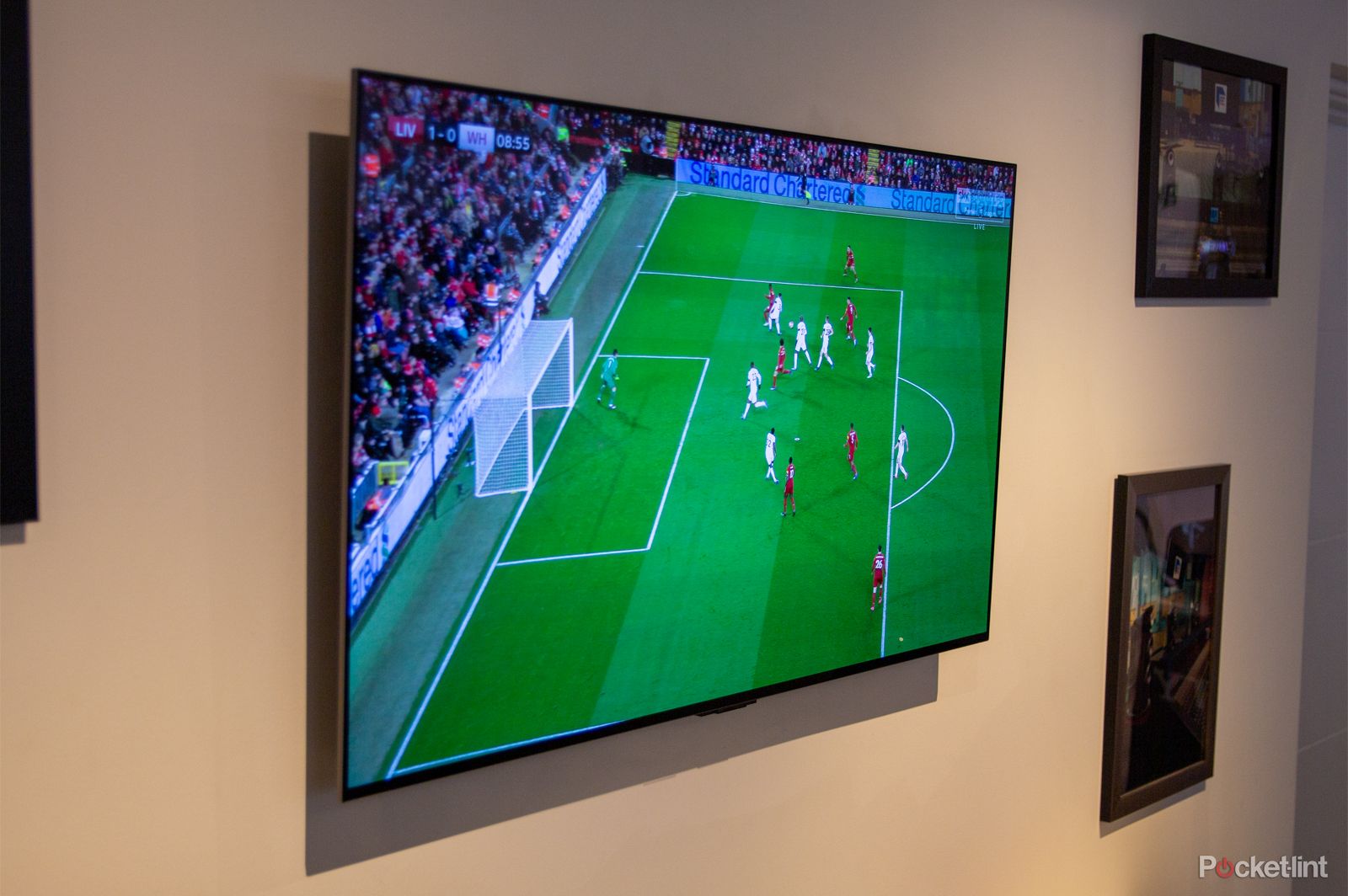
LG C2 OLED
5. Best 4K TV for OLED value
Still superb
$1247 $1500 Save $253
Our favourite TV of last year, the LG C2 OLED offers an outstanding picture alongisde the latest technologies, like Dolby Vision IQ, and 4K/120Hz support for gamers. Now it’s a year old, it’s even better value – and looks just as good as ever.
- Dimensions
- 1222 x 757 x 230mm (55in)
- Display Technology
- OLED
- Refresh Rate
- 100/120Hz
- Resolution
- 4K
- HDR?
- Dolby Vision IQ, HDR10, HLG
- Ports
- 4x HDMI (2.1), 3x USB, 1x optical, 1x ethernet
- Weight
- 17.5kg
- FreeSync
- Yes
- G-SYNC
- Yes
- VRR (Variable Refresh Rate)
- Yes
- ALLM (Auto Low Latency Mode)
- Yes
- Screen sizes (inches)
- 42, 48, 55, 65, 77, 83
- Gorgeous picture quality
- Good range of size options
- Robust smart platform
The LG C2 was our favourite TV in 2022 and it remains a top TV pick in 2023. That’s because the newer LG C3 – while fantastic in its own right – actually doesn’t move its performance on much from what we loved so much here. Considering the discounts the LG C2 is now on the receiving end of, it’s now a better buy than ever.
While it’s not as bright a panel as the LG G3, you do get a brighter panel than the LG C1, fantastic picture processing, outstanding gaming features and a wonderful smart TV system with all the apps you could need. The audio isn’t all that great though, so you’ll probably want to put aside some cash for a soundbar.
Considering the price difference the C2 and the C3, though, you’ll have money for to buy one. While the stocks of our favourite TV of 2022 last, your money is arguably better spent here if you’re considering a C Series purchase.

TCL C845K
6. Best 4K TV for smaller budgets
A marvellous Mini LED TV
This Mini LED TV has no business being this good and this cheap. There are some compromises to make, of course, but overall it offers up a simply stunning performance for the money.
- Dimensions
- 1225 x 794 x 280mm
- Display Technology
- Mini LED
- Refresh Rate
- 100/120Hz
- Resolution
- 4K
- HDR?
- Dolby Vision IQ, HDR10+, HDR10, HLG
- Ports
- 4 x HDMI 2.1, 1x USB, 1x optical, 1x headphone, 1x ethernet
- VRR (Variable Refresh Rate)
- Yes
- ALLM (Auto Low Latency Mode)
- Yes
- Screen sizes (inches)
- 55, 65, 75, 85
- Fantastically good value
- Uniquely bright pictures for its money
- Robust smart platformGood gaming support
- Care is needed with picture set up
- Some backlight clouding
- Default settings can come on too strong
The TCL 65C845K is easily the best value TV of 2023 to date – and it’s hard to imagine any other TV coming along in the coming six months that might knock it off that perch.
While its pictures might lack some of the naturalism, balance and refinement of the TV world’s most premium models, it delivers levels of brightness and colour we’ve simply never seen before at its price point – and thanks to its Mini LED and local dimming technologies, it’s able to combine those brightness and colour strengths with startlingly convincing contrast.
It seals its fantastic deal with a built-in sound system good enough to make adding an external sound system for movie nights a luxury rather than a necessity.
There are clearly some compromises to make here – and you should be aware of them if you choose to buy this set – but the fact is, this TV feels like it’s pushing new boundaries for affordable TVs. In the US? Take a look at the TCL QM8 for a similarly specced set.
The bottom line: What is the best 4K TV?
You are spoilt for choice for great TVs in 2023, but the best 4K TV you can buy in all regions right now – assuming you have the budget, of course – is the LG G3. It’s a simply stunning TV and compared to some of its competition, actually offers pretty good value for those with a larger budget. For any readers in Europe or the UK, the Panasonic MZ2000 is also fantastic – it actually pipped the LG G3 to win our award for TV of the Year, thanks to being the total package of cinematic pictures and outstanding sound. It’s a shame distribution doesn’t currently stretch to North America – but here’s hoping that changes soon.
If your budget won’t stretch to these models, then you can’t go wrong with the TCL C845K (take a look at the TCL QM8 in the States). You will have to make some compromises in some areas, but overall the value on offer here is almost mindblowing.
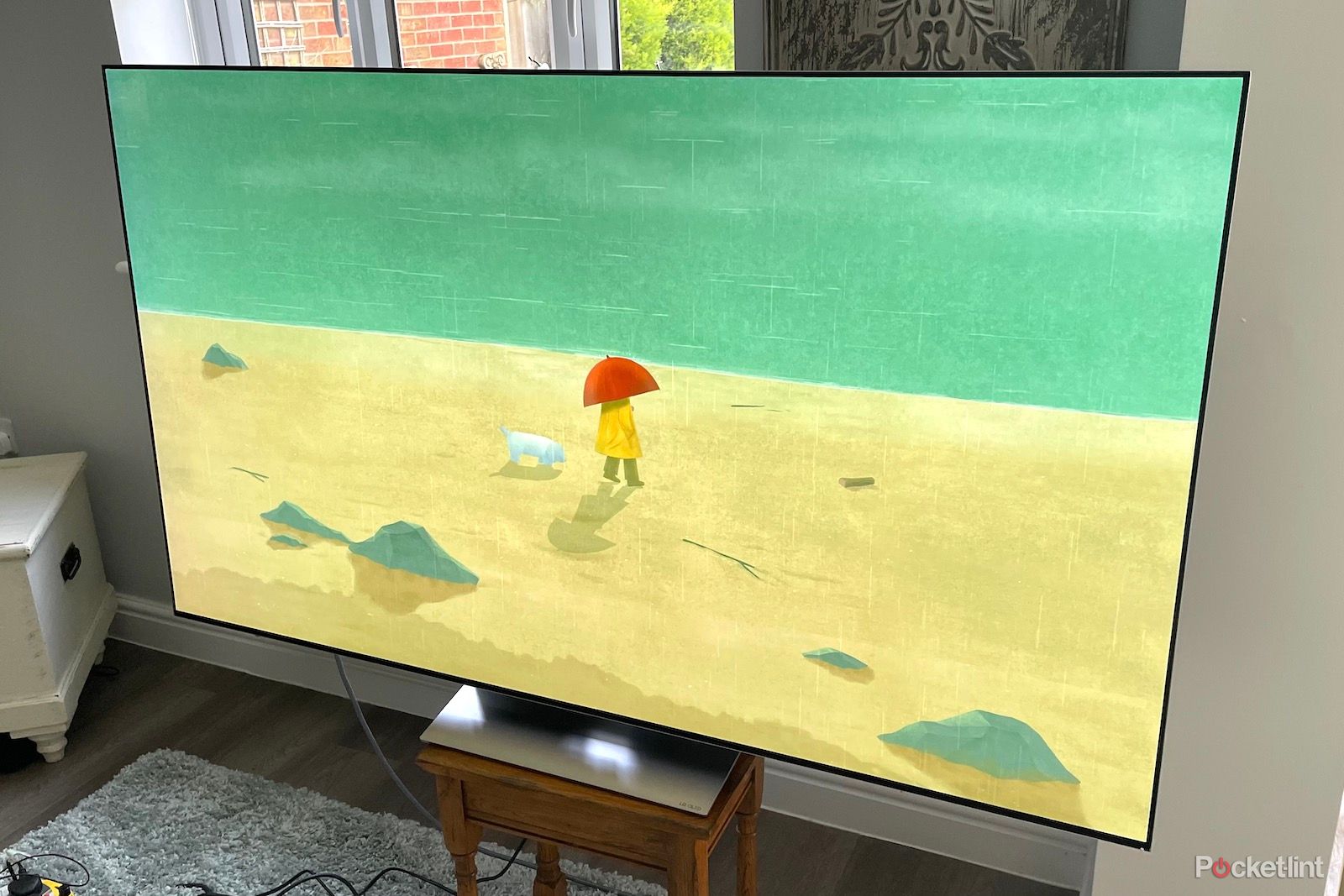
LG G3 OLED evo
Editor’s Choice
The best 4K TV you can buy
$2297 $2797 Save $500
- Dimensions
- 1441 x 878 x 245mm
- Display Technology
- OLED
- Refresh Rate
- 100/120 Hz
- Resolution
- 4K
- HDR?
- Dolby Vision IQ, HDR10, HLG
- Ports
- 4x HDMI, 3x USB, 1x optical
- VRR (Variable Refresh Rate)
- Yes
- ALLM (Auto Low Latency Mode)
- Yes
- Screen sizes (inches)
- 55, 65, 77, 83
How did I choose the best 4K TVs?
All of the TVs above have been seen and tested by the knowledgeable Pocket-lint team of reviewers. As reviews editor and home cinema expert, I have seen the majority of these sets myself, but where I haven’t, I have spoken at length with our reviewers to understand how each of these sets sit in their market. We don’t disregard 2022 TVs just because 2023 TVs are now on the shelves – if you can still buy them and we think they are the best buy when it comes to performance per pound (or dollar), they will feature here.
Should I buy OLED, LED or QD-OLED?
This is the biggest battle in televisions right now and it’s here that you’ll have to make the biggest decision. What display technology are you after? Here’s the current state of play.
OLED produces the light from each pixel rather than having illumination from the sides or rear like LED. This means that OLED can achieve better absolute blacks, because the TV can just turn off that pixel’s illumination. Having greater contrast and better viewing angles often leads to richer colours and greater accuracy, but the brightness levels traditionally haven’t been as high.
That’s beginning to change with new technology from LG, and in the LG C2 Evo OLED recommended above, we’re seeing brighter panels that can compete with the likes of LED for the first time. This is in some part down to the use of heat sinks, which allows the panels to be run harder than before – without an impact on the panel’s lifespan.
OLED’s evolution is bolstered further by the development of QD-OLED panels by Samsung, which are also used in Sony’s flagship OLED sets. This hybrid technology combines the best bits of OLED and QLED displays, and uses a layer of quantum dots on top of the OLED material to boost brightness and improve colour saturation.
Traditional LED is still generally brighter, and often used at lower price points, with some TVs capable of outputting well over 2000 nits. QLED from Samsung is a form of LED, and while once their premium technology, is now the tech behind some of their more affordable panels now.
In its place is Samsung’s premium Neo QLED brand, which uses Mini LED technology. This rivals OLED levels of light control and accuracy, alongside incredible LED brightness, and that’s all because the LEDs in the backlight not only stretch across the whole of the screen but are also much smaller. This means there is much more control over the brightness levels in the different areas of the television, and reduces the blooming some standard LED TVs can experience.
Ultimately, if you’re buying a premium LED TV in 2023, you’re probably looking at choosing between OLED (or QD-OLED) or Mini LED. With both technologies pulling out the stops to fill in the gaps that they were lacking, it’s unlikely you’ll find much issue with picture quality in either. Instead, you may want to look deeper – to consider smart systems and included apps, HDR compatibility and gaming functionality, depending on your priorities.
What should you consider when buying a new TV?
When it comes to buying a new television there’s a lot to consider. The most important thing is size – you need to make sure that it’s going to fit into the room that you put it in. Despite changes in technology, it needs to be comfortable to watch, so so you can’t watch it without moving your head, then you might want to go smaller.
One of the big considerations at the moment is around resolution. With 4K now being fairly common and affordable, we have 8K waiting in the wings. But 8K is only really for larger TV sizes, those over 70 inches, where you’ll need that resolution to keep the picture sharp. There’s currently no real 8K source of content with everything based around upscaling instead, so for many, 8K isn’t really part of the equation right now.
The other biggest change is HDR. Every TV you buy from the premium manufacturers covers a number of HDR standards, which we’ve detailed below. The only real consideration is that if you’re buying a Samsung TV, you won’t get Dolby Vision support – and if you’ve got access to a lot of Dolby Vision content, you might want to look elsewhere. If you’re a keen gamer with the Xbox Series X or S or a PS5 – or you want to connect a PC – you’ll want that 120Hz support and technologies like VRR, ALLM and FreeSync/G-Sync.
We’ve discussed the panel type above and the battle between OLED and LED continues, with Mini LED putting up a valiant fight against OLED too. OLED is getting more affordable and is now available in a much wider range of sizes and is the choice for many – but top LED televisions can still offer a better HDR effect because of that higher peak brightness.
Ultimately, much might come down to what sort of deal you can get. TVs can drop in price fairly rapidly with a yearly refresh cycle, so checking out a slightly older TV, as long as it does what you want, might save you a lot of cash.
TV jargon buster: A dictionary
One of the confusing things about televisions is the jargon that goes along with them. Here’s a very brief run-down of the important things to look out for:
- HDR – high dynamic range, to bring the latest colour and contrast, also called HDR10, uses static metadata.
- Dolby Vision – an alternative form of HDR, promising a more enhanced HDR experience, uses dynamic metadata.
- HDR10+ – an evolution of HDR10, a competitor to Dolby Vision, uses dynamic metadata.
- Dolby Vision IQ – a version of Dolby Vision that allows for ambient light levels.
- Filmmaker Mode – a mode to show the content as the creator intended, overriding user settings.
- 120Hz – the refresh rate for the display, only really applicable if connecting an Xbox Series X/S or PS5.
- VRR/ALLM/Nvidia G-Sync/FreeSync – technologies to deliver superior experiences in gaming.
- HDMI 2.1 – the latest HMDI standard supporting 120Hz and 8K content.
- 1080p – also called Full HD, or 1920 x 1080 pixels.
- Ultra HD/UHD/4K – 3840 x 2160 pixels.
- 8K – the step up resolution, 7680 x 4320 pixels.
- OLED – Organic LED, where the light is emitted from each pixel, meaning deep blacks, vibrant colours and amazingly thin designs.
- QLED – Samsung’s quantum dot display, LED based and not to be confused with OLED.
- QD-OLED: Quantum Dot OLED, Samsung’s new hybrid OLED technology
- Direct LED – where the illumination source is directly behind the display, meaning deep blacks, but thicker designs, also called full array.
- Edge LED – where the illumination source is at the edges and channeled across the rear of the display, resulting in thin designs, but without the illumination control of direct LED or OLED panels.
- Mini LED – a form of direct LED, Mini LED features thousands of tiny bulbs that can be locally dimmed, offering superb brightness but without impacting on black levels.
Trending Products

Cooler Master MasterBox Q300L Micro-ATX Tower with Magnetic Design Dust Filter, Transparent Acrylic Side Panel, Adjustable I/O & Fully Ventilated Airflow, Black (MCB-Q300L-KANN-S00)

ASUS TUF Gaming GT301 ZAKU II Edition ATX mid-Tower Compact case with Tempered Glass Side Panel, Honeycomb Front Panel, 120mm Aura Addressable RGB Fan, Headphone Hanger,360mm Radiator, Gundam Edition

ASUS TUF Gaming GT501 Mid-Tower Computer Case for up to EATX Motherboards with USB 3.0 Front Panel Cases GT501/GRY/WITH Handle

be quiet! Pure Base 500DX ATX Mid Tower PC case | ARGB | 3 Pre-Installed Pure Wings 2 Fans | Tempered Glass Window | Black | BGW37

ASUS ROG Strix Helios GX601 White Edition RGB Mid-Tower Computer Case for ATX/EATX Motherboards with tempered glass, aluminum frame, GPU braces, 420mm radiator support and Aura Sync


